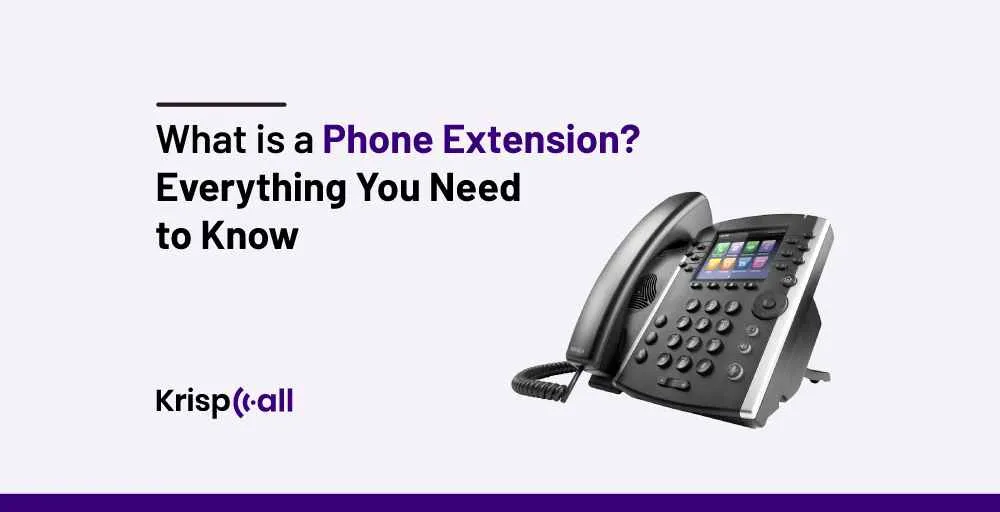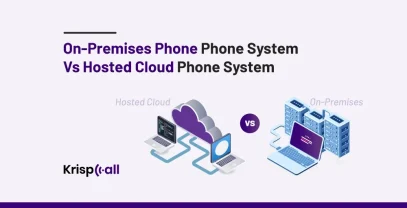Curious about phone extensions? Wondering how it can optimize your office’s communication flow and boost team collaboration? 🤔
Look no further than our comprehensive guide on Phone Extension. 🌟
With phone line extensions, you can seamlessly link and connect every department within your company directly to you. Additionally, you can provide customers with the opportunity to reach the specific person or department they require. It helps to uplift customer’s overall experience.
In this blog, you will learn about phone extensions, how they work, their importance, how to dial a phone number with an extension, and more.
🗝️ Key Highlights
- A Phone Extension is a short internal number assigned to specific devices, lines or departments within a business’s phone system.
- To dial a number with an extension, dial the main number, listen for prompts to enter the extension code, press * or #, and wait to connect to the desired department.
- Phone extension works by assigning multiple numbers to a single phone line and directing calls to specific departments or individuals within an organization, either through physical connections in PBX systems or virtual connections in VoIP systems.
- Phone extensions offer advantages such as boosting customer service, saving costs, enabling scalability, improving internal communication, and providing remote accessibility.
Let’s get started. 🚀
What is a Phone Extension?
A phone extension is an additional set of digits added to a main telephone number. It directs calls to specific individuals or departments within an organization. Extension numbers are commonly used in office environments to improve communication processes. Both internal and external callers can use them.
A phone extension is also useful for small businesses that employ remote workers. It allows customers to reach the appropriate department anywhere in the world without dialing separate phone numbers.
Phone extensions equipped with Busy Lamp Field are essential for managing call traffic and optimizing response times.
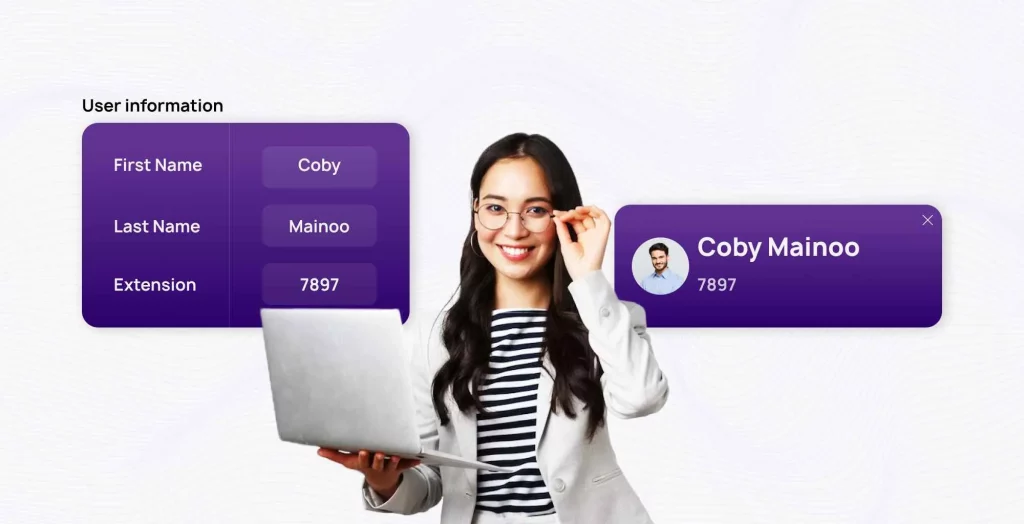
For example, In a large company, each department is assigned its own phone extension. It directs callers to the appropriate department by dialing the corresponding extension after calling the main office landline number.
The Sales Department might have extension 100, Marketing 200, Human Resources 300, and Finance 400. And, if someone wishes to reach the Sales Department, they will input extension 100 after calling the main office number. The action directly connects them to the Sales team.
How Does a Phone Extension Work?
Phone extensions works by allowing multiple numbers to be linked to a single phone line within an organization. Each number, known as an extension, is linked to a specific department or employee.
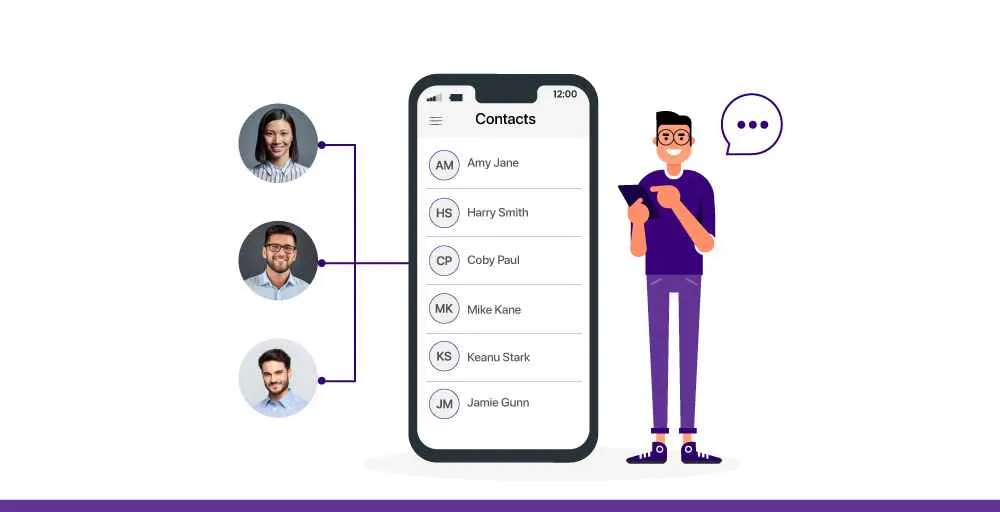
The functionality of phone extensions varies depending on the type of phone system you chose:
1. PBX System
In a Private Branch Exchange system, phone extensions are typically physical lines connected to a central switching unit (the PBX). Each extension corresponds to a specific physical phone within the organization.
When a call is made to an extension, the PBX routes the call internally to the designated phone. It often uses copper wiring or analog lines to connect the phones to the PBX.
- Features: Depending on the capabilities of the specific system, PBX systems can offer various features, such as call forwarding, conferencing, voicemail, and more.
2. VoIP System
VoIP systems utilize the internet to transmit voice data instead of traditional phone lines. In a VoIP system, phone extensions are typically virtual rather than physical. Each extension is associated with a user or a device, and calls are routed over the organization’s IP network. You can also easily add an extension to a phone number in a VoIP system.
- Flexibility: VoIP systems offer greater flexibility compared to traditional PBX systems. Extensions can be easily configured, reassigned, or removed as needed without the need for physical rewiring.
- Features: Unified Messaging, Integration with CRM Systems, Video Conferencing, Mobile App Support, Call Recording, Auto-Attendant, Integration with Collaboration Tools, Customizable Call Routing, Call Analytics, and more.
What are the Benefits of Having a Phone System with Extensions?
Having a phone system with extensions offers several important benefits:
Boost Customer Service
Extensions help to streamline incoming calls by directing them to the appropriate department or individual. It reduces the likelihood of customers being transferred multiple times or waiting on hold for extended periods. When customers can quickly reach the right person, their issues are addressed more efficiently and achieve higher satisfaction levels.😀
Cost Saving
Traditional phone systems often require separate lines for each employee or department. By implementing extensions, businesses can consolidate their phone lines, leading to cost savings on online rental fees and equipment. Additionally, modern phone systems with Voice over Internet Protocol (VoIP) technology offer even greater cost savings by utilizing existing internet connections for calls.
Scalability
As businesses grow or change, they need a phone system that can adapt to their evolving needs. Phone systems with extensions are highly scalable. It allows companies to add or remove extensions as required easily. It makes sure that the communication infrastructure can keep pace with organizational growth without requiring extensive reconfiguration or investment in new hardware.
4. Improved Internal Communication
Extensions facilitate seamless communication among employees, departments, and branches within an organization. Instead of relying on generic phone numbers, employees can use extensions to reach specific colleagues directly. This promotes collaboration, reduces miscommunication, and fosters a more cohesive work environment.
Increased Efficiency and Productivity
With extensions, employees can transfer calls to the another person or department who can handle the calls more efficiently. It minimizes the time spent in handling incoming inquiries. Moreover, features such as voicemail-to-email transcription and call forwarding enhance productivity by ensuring that messages are promptly received and acted upon, regardless of an employee’s location.😊
Remote Accessibility
In today’s increasingly mobile workforce, the ability to stay connected from anywhere is essential. Phone systems with extensions offer remote accessibility features that allow employees to access their extensions from smartphones, tablets, or laptops. It enables remote workers to remain seamlessly integrated with the rest of the team and maintain high levels of productivity regardless of their physical location.
BUSINESS VS RESIDENTIAL PHONE EXTENSIONS
The major differences between business and residential phone extensions are:
| Aspect | Business Phone Extensions | Residential Phone Extensions |
| Purpose | It usually offers basic features like voicemail, caller ID, call waiting, and sometimes call forwarding, designed to meet personal communication needs. | Residential phone extensions are primarily intended for personal communication within a household. They facilitate communication between family members, friends, and personal contacts. |
| Quantity | It requires a larger number of extensions to accommodate various departments, teams, and employees within an organization. | It usually has a limited number of extensions, typically corresponding to the number of individuals or devices within a household. |
| Features | It often comes with advanced features customized to professional needs, such as call forwarding, voicemail, conferencing, auto-attendant, and integration with other business tools like CRM systems. | Due to the nature of business operations, it handles higher call volumes, including customer inquiries, sales calls, internal meetings, and collaboration between teams. |
| Call Volume | It handles higher call volumes due to the nature of business operations, including customer inquiries, sales calls, internal meetings, and collaboration between teams. | It generally experiences lower call volumes compared to businesses. Calls are typically personal in nature, involving family members, friends, and occasional personal or social calls. |
| Cost | Business phone systems often come with higher costs due to the need for advanced features, scalability, and professional support services. Costs may vary based on the size of the organization and the specific features required. | Residential phone services tend to have lower overall costs compared to business phone systems. They are designed to be affordable for individual households. |
How do you dial a phone number with an extension?
You can easily call a phone number with an extension on your mobile or telephone.
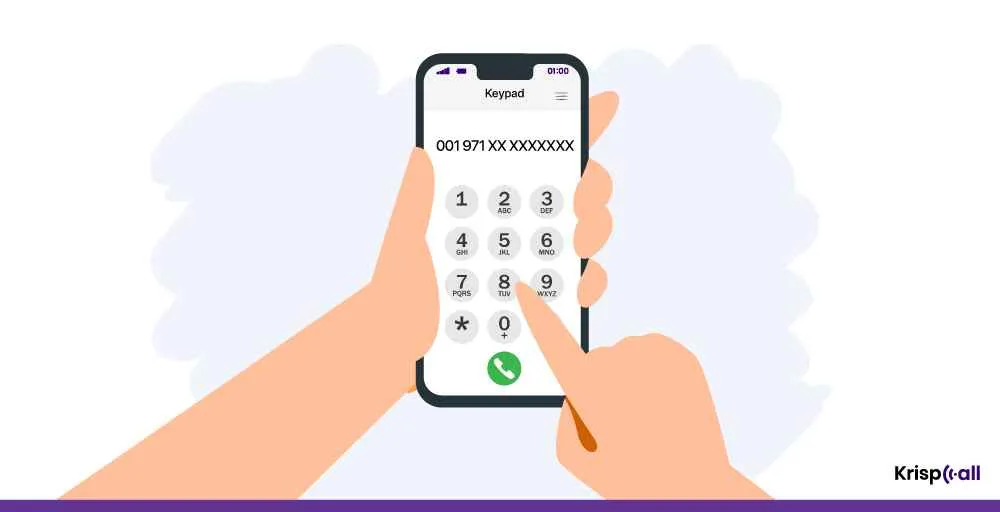
To dial a phone number with an extension:
- Dial the main number: As you dial other numbers, call the main number you wish to call from your phone or telephone.
- Listen for Prompts: After that, pay close attention to the extension prompt. Many businesses employ automated systems to guide callers through entering an extension. If you hear this prompt, wait until the system finishes speaking before entering the extension number.
- Enter the extension to the phone number: If you’re aware of the extension and wish to connect directly once your call is answered, press the * key followed by the extension code, then press the call button. If you’re unsure of the extension code or want to listen to call menu options, press the # button after dialing the 10-digit number, then place the call. Upon hearing the correct extension, enter it to be connected automatically.
- Be patient while waiting for the call to connect: Once you’ve entered the extension number, wait for the call to join. You might hear a few beeps or a brief hold message, but there’s no need to worry. You will reach the desired person or department promptly.
How are Calls Routed to an Extension?
Calls are routed to an extension through the call routing process of a VoIP phone system or a private branch exchange (PBX). When a call is received, the PBX examines the dialed extension number and then forwards the call to the appropriate phone or device associated with that extension.🌟
For example, You call a company and want to speak with someone at extension 101. When you dial the company’s main number, the telephone system recognizes your request for extension 101. It then directs your call to the phone assigned to extension 101. If the person at extension 101 is available, their phone will ring, and they can answer the call. If they’re busy or unavailable, the call might go to their voicemail or be handled according to the company’s call routing settings.
Calls can be routed to extensions using different algorithms:
- Simultaneous Routing: In simultaneous routing, all team members receive calls at the same period of time, regardless of their current task or availability. It allows quicker response times.
- Sequential Routing: With sequential routing, calls are directed from one team member to another in a predetermined sequence based on defined criteria. For instance, calls may be routed to the manager of each department first. They will only be redirected to other team members if the managers are unavailable, following predefined rules.
- Round-Robin Routing: In round-robin routing, calls are distributed circularly among team members. Each call is directed to the next available team member in the sequence, ensuring an equitable distribution of calls among all members. If all members are busy during the initial cycle, the call repeats until it is answered.
- Priority-Based Routing: Calls are routed to extensions based on predefined priorities. Higher-priority extensions receive calls before lower-priority ones. It helps to address critical calls promptly.
Use Cases
Routing algorithms play a crucial role in determining the efficiency and effectiveness of call distribution within a business. The choice of algorithm depends on the specific needs and dynamics of different entities within the organization.
Individuals:
For individual users, personal convenience is crucial. They should have the flexibility to choose the routing algorithm that best suits their preferences and work style.
Users should be free to customize their workflow according to their preferences, whether that means setting all devices to ring simultaneously or implementing a round-robin sequence.
Teams:
The nature of the team’s work and the volume of calls they handle influence the choice of routing algorithm. The simultaneous algorithm is beneficial for a sales team handling a high volume of calls. It ensures that all available operators receive calls concurrently and encourages healthy competition among team members.
Departments:
The structure and hierarchy of departments determine the most suitable routing algorithm. For example, the financial department, which might receive fewer calls compared to other departments, could benefit from a sequential approach. Calls would initially be routed to the assistant for filtering, with escalation to a senior team member if required. The hierarchical method efficiently manages calls by utilizing the expertise of various team members.
What are the Best Practices for Using Phone Extensions?
Some of the best practices for using phone extensions are:
- Extension Number Awareness: A company’s employees must be fully aware of their assigned extension numbers. It facilitates the smooth routing of calls within the organization and minimizes confusion.
- Limit extension lengths: If possible, minimize extensions to 4 digits or fewer. Shorter extensions minimize input errors and boost user efficiency. They also contribute to smoother operations and improve productivity.
- Optimizing Extension: Another best practice is ensuring your phone system can efficiently handle incoming calls. You can use features like an auto-attendant that greets callers professionally and routes calls to the appropriate department. You can also utilize functionality like Call Queues that allow callers to remain on hold until an agent can help them.
- Track and Monitor Extension Activities: Real-time call center analytics provide insights into call duration, call queue length, agent performance, inbound calls, outbound calls, and total call volume. By monitoring these analytics, you can optimize staffing levels, improve call routing, and boost the customer experience.
- Allow Real-Time Editing of Call Flows: Automatic or Manual editing of call flows in the call center simplifies managing fluctuations in call volume, agent schedule changes, and more.
- Gather Customer Feedback: You can implement post-call customer surveys to gain further insight into the effectiveness of IVR call paths, call routing strategies, existing call groups, and other related aspects.
- Customized Voicemail: You can set up personalized voicemail greetings, including their name, title, and instructions for leaving messages. It helps callers feel comfortable reaching the correct person or department.
How to Set up a Phone Extension?
The setup of phone extensions varies depending on the type of business phone system. However, the basic setup process is:
- Purchase a business phone number from a reliable VoIP platform.
- Establish phone number extensions and assign them to agents and departments accordingly.
- Create call forwarding, ringing, groups, IVR menus, call routing strategies, and other call distribution methods to make sure callers reach the perfect extension.
- Implement automatic historical reporting and real-time call analytics, complemented by push notifications, to monitor and refine extension dialing performance.
- Establish an internal company directory to facilitate swift access for both customers and employees. It quickly locates the desired agent or department.
- Provide training to agents and manage their performance.
Wrapping Up
In conclusion, implementing unique extension numbers for each phone line can significantly boost the efficiency and professionalism of your business communication system. When callers are provided with designated extensions, they can easily reach specific individuals, agents, or departments.
Businesses can optimize their phone systems by following best practices and customizing solutions to their needs. It improves internal communication, boosts customer satisfaction😊, and provides smooth internal operations.
If your business lacks phone extensions, think about adding them for better communication. KrispCall provides 24/7 human customer support and advanced features with high-quality phone extensions. 🚀
Book a free demo with KrispCall today and boost your communication to a higher level of professionalism.
FAQs
What is my phone extension number?
A phone extension number is a numerical code assigned to a specific phone line within an organization or business. It allows callers to directly reach an individual or department by dialing the extension number rather than the full phone number. Phone extension numbers are typically used in offices, campuses, and large facilities to improve communication and facilitate internal calls.
What features can be associated with a phone extension?
The features that can be associated with a phone extension are:
- Call Group
- Interactive Voice Response (IVR)
- Call Routing
- Call Forwarding
- Call Transfer
- Call Queuing
- Voice Mail
- Auto-attendant
- Live Call Monitoring
- Direct Inward Dialing (DID)
Is it possible to assign two extensions to a single user?
Yes, it is possible to assign two extensions to one user. For instance, you could allocate a staff member to manage their personal extension as well as a group extension, like customer service, to boost their productivity. It handles calls that are directed specifically to them as well as those that are directed to customers. Additionally, as your business expands, you can add or remove extensions as necessary.
How many extensions can you have with VoIP?
The number of extensions available with VoIP varies depending on your provider. Most offer different plans with varying numbers of extensions. If your business needs multiple phone lines, using multiple VoIP extensions could be the ideal solution.
What is the usual digit count for an extension number?
The usual digit count for an extension number can vary depending on the specific phone system or organization’s preferences. However, in many systems, extension numbers typically consist of three to five digits. Some organizations may use longer extension numbers, particularly if they have many employees or departments.
Can I Call an Extension Number?
Yes, you can easily call an extension number. When calling a business phone number with an extension, you would dial the main number first and then follow the prompts or instructions to enter the extension number. Afterward, you can reach a specific person or department within the organization.
Can Cell Phones have Extensions?
Yes, If you install the KrispCall mobile app, your cellphone can have extensions. Since KrispCall operates in the cloud, once you get a business phone number and extension, you can make and receive calls on your cell phone.

